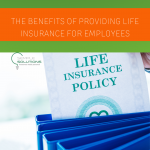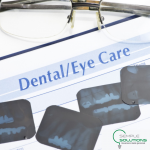Did you know that 25 percent of the population will be disabled before making it to retirement? Additionally, many of those people aren’t enrolled in any employee offered plans to cover costs.
Many people don’t fully understand how a disability plan works or if they even need it. Out of the 63 percent of employers with options for full-time employees to enroll, only 33 percent are actively enrolled.
Keep reading on to learn more on how to get enrolled in long-term disability and how it compares to short-term plans.
Long-Term Disability
Long-term disability kicks in after three to six months when most short-term periods end. This disability plan will replace approximately 50 to 60 percent of your income, depending on the company. Many employers and companies will cover you for the length of time until retirement age.
Companies will vary on how much the employee is expected to pay. It can range from the employer covering the cost to the employee picking up the majority of the premium.
It is becoming more common for employers to enroll their employees in plans automatically which is helping to boost the numbers of people enrolled. If you opt for enrollment later on it can prove to be more challenging or costly.
How do you qualify for this? The process can be taxing and tedious. Depending on the situation, you might not see the benefits kick in for a couple of years.
Cancer is a common diagnosis seen with patients who opt for disability as the process for treatment can sometimes last months or years.
Other examples of disabilities often go unnoticed. Did you know that anxiety, depression, and other mental health illnesses are qualifying diagnoses? Other instances include autoimmune diseases or something more traumatic like a stroke or spinal cord injury.
Short-Term Disability
This is meant to temporarily cover the employee for an injury or illness. At the maximum end, short-term disability caps out at around the one-year mark. However, many people use much less than that.
This option is most commonly seen with pregnancies or surgeries. It covers up to 60 percent of your income and can kick in right away. Many people who choose long-term disability plans also have a short-term plan.
This is beneficial to have for once your short-term benefit runs out.
Employee Benefits
While large companies are used to providing expansive benefits to their employees, it can pay dividends for smaller companies to also invest in quality benefits.
Many employees seek out companies that provide great benefits. Group insurance for companies cuts down on costs and provides incentives for employees.
Businesses also receive some incentive for providing their employees with benefits. Some businesses can get a 50 percent return on what they invest for their employees. If you have a small business, check in with your local laws for small businesses on health benefits for your employees.
Register Now!
Open enrollment plans can be a huge benefit for employees and employers. It can cut down on costs and provide peace of mind. Additionally, long-term disability lasts until retirement age, providing comfort for unforeseen events.
Don’t wait any longer, check out our group health insurance plans, and rest easy knowing you are in good hands.




